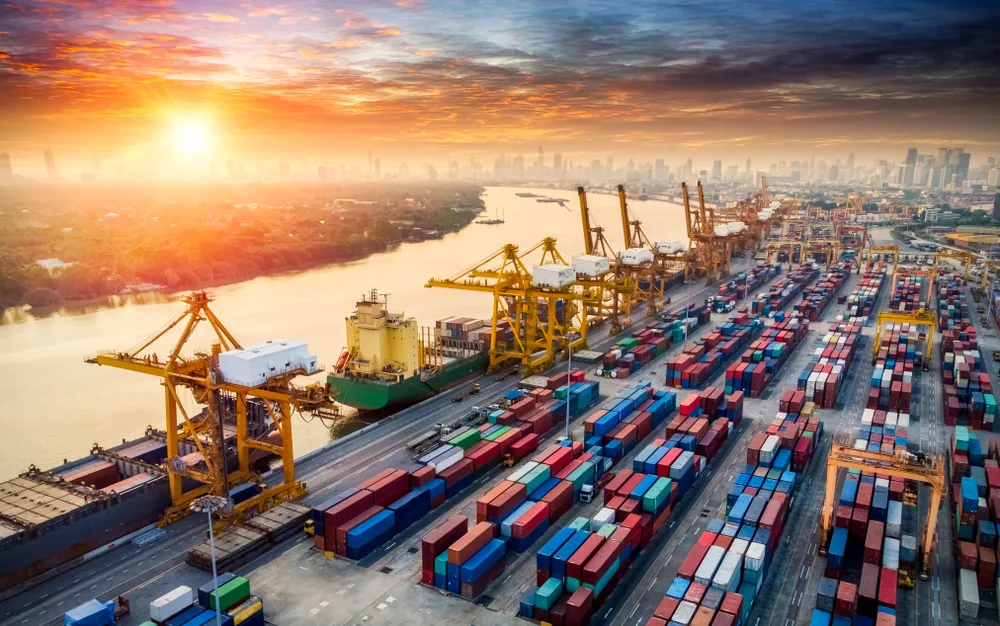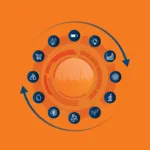GUIDANCE AND MANAGEMENT FRAMEWORKS
Transport safety is our industry’s license to operate
We are committed to responsible end-to-end operations. Our ambition is to build a safer, cleaner and smarter EU transport and logistics system.
While supporting the EU and international decision makers with industry data and insights, we also lead the development of voluntary initiatives, support best practice sharing and offer guidelines, developed in close collaboration with the transport industry, to enhance transport and logistics operations on the ground.
Contributing to an efficient, reliable and resilient transport system
We make our transport system smarter through collaboration and digitalisation. This means providing guidance on:
- Collaboration for data sharing
- Digitalisation, harmonisation and integration of processes
- Infrastructural, digital and organisational measures to tackle driver shortage
Our guidelines to address these topics include recommendations developed jointly by Cefic and ECTA, the European Chemical Transport Association.
Person of contact

Joost Naessens
jna@cefic.beDownload the Cefic recommendation to tackle the impact of driver shortage in the European Chemical transport.
Towards a low-emission transport optimisation guidelines
We strive for a low emission transport system by taking systematic steps to optimise use of all transport modes, including multimodal optimisation, shift to rail and inland navigation, and the shift to more energy efficient transport modes.
To help the chemical sector reduce its environmental impact, Cefic partners with Smart Freight Centre (SFC) to develop guidance on calculating GHG transport and logistics emissions for the European Industry.
The module for the Global Logistics Emissions Council (GLEC) Framework enables the chemical industry to gain a deeper understanding of GHG emissions from transporting goods; both inbound to production plants and outbound to customers.

Cefic also created the Transport Insights Tool, accessible to members, providing valuable information on the environmental and societal impacts of chemicals transport across Europe. This includes:
- Transport volumes for every transport mode and every European country
- Transparent insights on the emissions and external costs
- Cost simulation and emission benefits of modal shift to rail or inland waterways
This data helps policymakers, national authorities, and industry to make informed decisions on transport optimisation and to support our industry’s transition.
Safety guidelines

Safety & Quality Assessment for Sustainability (SQAS)
Our flagship initiative to support logistics service providers to continuously improve operations through an assessment scheme. SQAS is an important element of Responsible Care® applied to logistics operations, covering the road transport companies, tank cleaning stations, warehouses, transfer terminals and rail carriers.

European Safety Assessment for Distribution (ESAD)
A similar assessment scheme, specifically designed for chemical distributors. Cefic leads this initiative in co-operation with the European Chemical Distributors Association (FECC).

Quality assessments for sea and barge transport (CDI)
The Chemical Distribution Institute (CDI) and the European Barge Inspection Scheme (EBIS) is tailored for sea and barge transport and assessment reports are accessible by SQAS members.

Emergency intervention initiatives
Intervention in Chemical Transport Emergencies (ICE)
ICE is a Cefic-led co-operative network which supports the rapid and effective response to chemical transport emergencies. In the event of an incident, the chemical industry provides emergency responders with practical support, resources, and, where necessary and possible, specialised equipment.
Since 2008, Cefic is also collaborating with the European Maritime Safety Agency (EMSA) and the French Centre d’étude du droit de l’environnement (CEDRE), to provide information and expert advice on chemicals involved in maritime emergencies.
Emergency Response Intervention Cards (ERICards)
ERICards are Cefic emergency instructions that guide first responders on the initial actions to take during chemical transport accidents. Available in 19 languages, ERICards enhance emergency preparedness.
Transport and Logistics guidance documents
Cefic has developed a set of Transport and Logistics guidelines to promote resilient, smart, and sustainable chemical mobility in the EU. These recommendations address transport risk management, dangerous goods handling, transport security, digital collaboration & data sharing, logistics infrastructure and more.
Date
TITLE
-
Best practice guidelines for safe working at height-in the logistics supply chain
-
Guidelines for transportation security
-
Best practice guidelines cleaning dry bulk polymer transport tanks
-
Best practice guidelines for loading transport and unloading of Flexitanks
-
SULID – site unloaded information document Bulk liquid (IT)
-
Best practice guidelines for safe Un-Loading of road freight vehicles
-
Good practice for ship vetting
-
Recommendations to tackle the impact of driver shortage in the European chemical transport
-
Guidance on implementation of SOLAS Chapter VI
-
Guidelines for the security of the transport of dangerous goods by road












